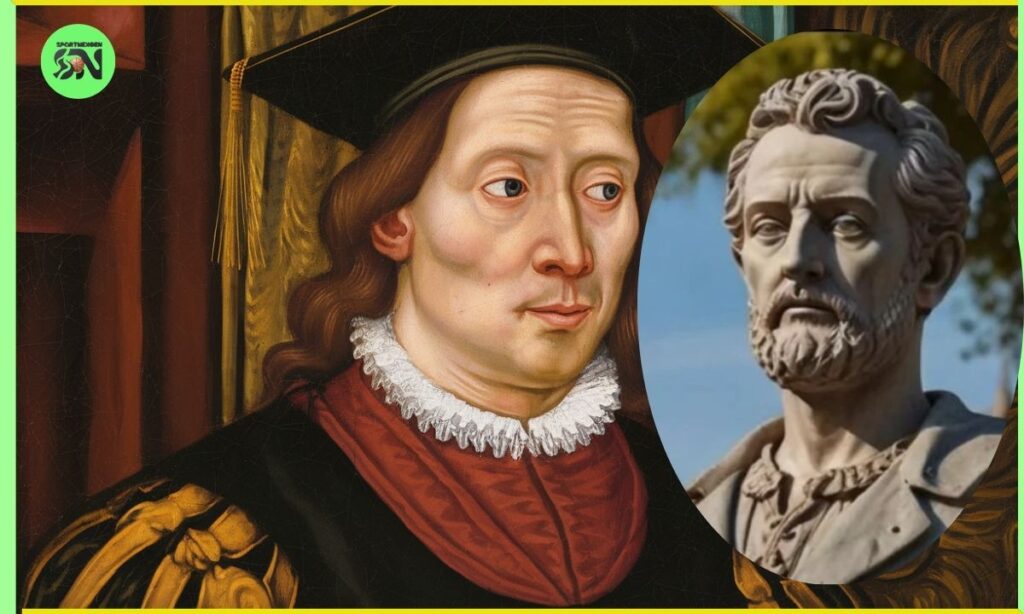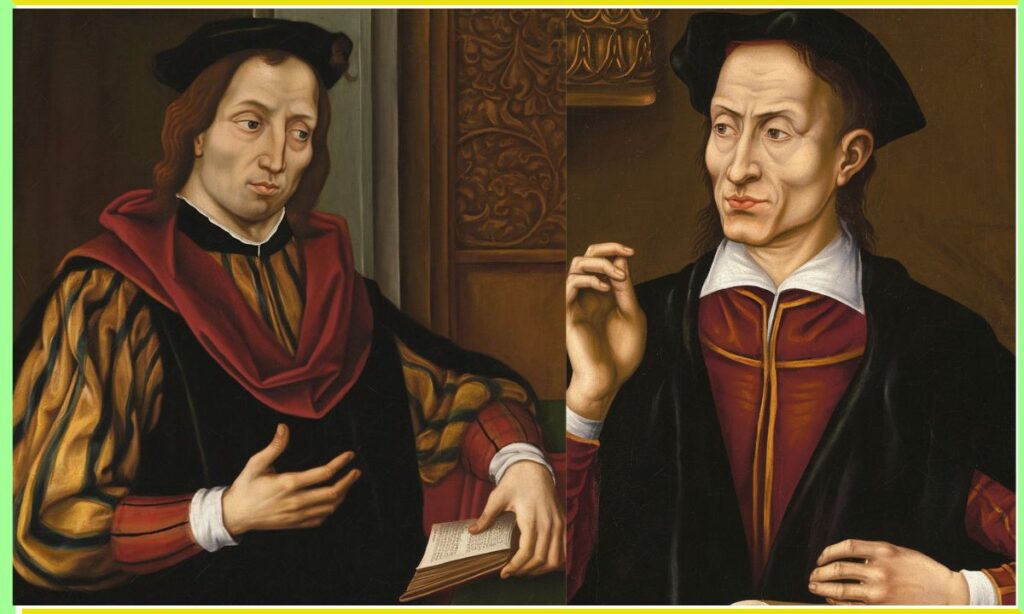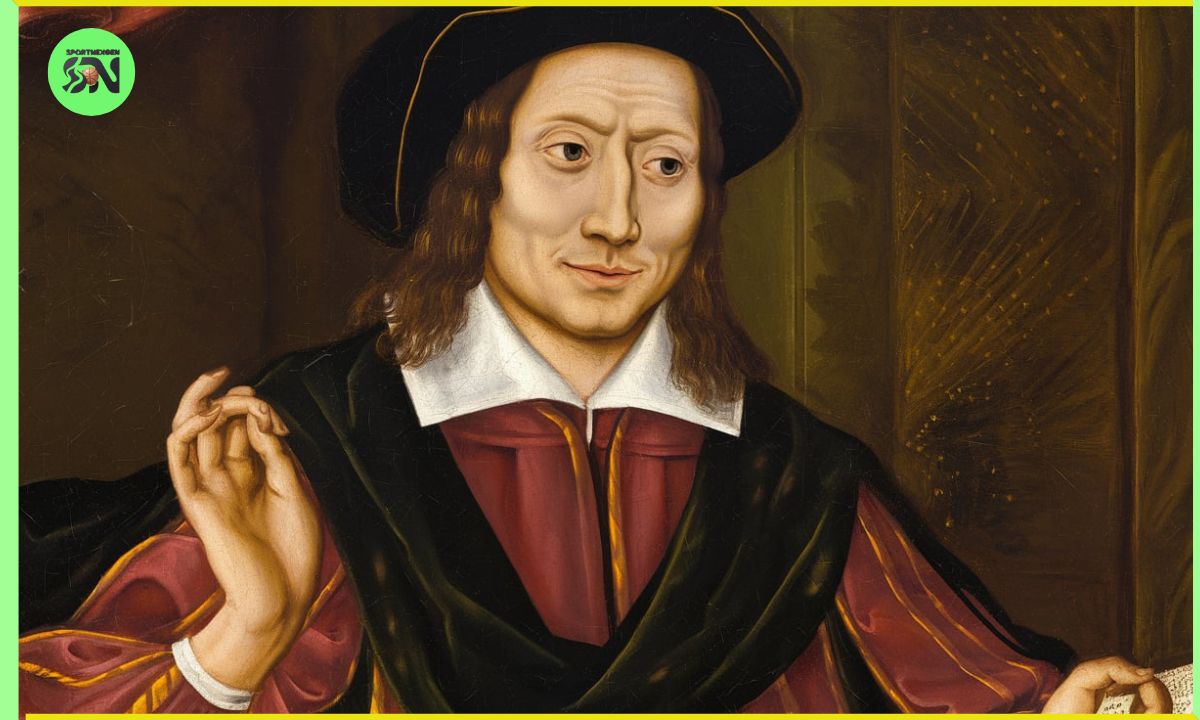The 1555 Portrait Servais Germany stands as a remarkable testament to the Renaissance era, capturing the essence of a pivotal period in European history. This masterpiece not only immortalizes Heinrich Servais, a prominent 16th-century German intellectual but also embodies the artistic and cultural ideals of the Renaissance.
Imagine stepping into a world where art and intellect intertwine, where a single portrait can reveal the complexities of an entire era. The 1555 Portrait Servais Germany does just that, offering a window into the mind of a Renaissance scholar and the society that shaped him. This artwork serves as a captivating hook, drawing viewers into the rich tapestry of 16th-century German culture.
The 1555 Portrait Servais Germany is more than just a painting; it’s a historical artifact that provides invaluable insights into the Renaissance intellectual awakening. Through its meticulous details and symbolic elements, this portrait offers a glimpse into the life of Heinrich Servais, his contributions to education and civic advancement, and the broader cultural context of his time.
1555 Portrait Servais Germany: Capturing the Impact of a Renaissance Scholar
The 1555 Portrait Servais Germany stands as a powerful visual representation of Heinrich Servais’s influence on Renaissance Germany. This masterpiece not only captures Servais’s physical likeness but also conveys his intellectual prowess and social standing. The portrait’s composition and symbolism reflect the era’s emphasis on individual achievement and the pursuit of knowledge.
Heinrich Servais, a prominent figure among 16th-century German intellectuals, made significant contributions to education and civic life. His portrait serves as a testament to his role in shaping the cultural and intellectual landscape of his time.
The artwork’s attention to detail, from Servais’s contemplative expression to his scholarly attire, provides viewers with a nuanced understanding of his character and accomplishments. The 1555 Portrait Servais Germany exemplifies the Renaissance ideals in art, showcasing the period’s focus on realism and human-centered subjects.
Exploring the Artistic Significance of the 1555 Portrait Servais Germany
The 1555 portrait of Heinrich Servais is a testament to Renaissance artistic techniques, showcasing the era’s mastery of chiaroscuro and detailed textural rendering. This artwork not only captures Servais’s likeness but also reflects the period’s growing emphasis on individualism and personal identity.
Masterful Techniques
The 1555 Portrait Servais Germany exemplifies the pinnacle of Renaissance artistic achievement. The painter’s masterful use of chiaroscuro in Renaissance portraits creates a sense of depth and volume, bringing Heinrich Servais to life on canvas. This technique, which involves the dramatic contrast of light and shadow, adds a three-dimensional quality to the portrait, emphasizing Servais’s facial features and the textures of his clothing.
Symbolic Elements
Beyond its technical brilliance, the portrait incorporates symbolic elements that speak to Servais’s role as a Renaissance figure. Objects in the background, such as books or scientific instruments, hint at his intellectual pursuits and contributions to education. The choice of colors, particularly rich reds and deep blues, may signify his social status and the importance of his work in 16th-century Germany.
Capturing Character
The artist’s ability to capture Servais’s character goes beyond mere physical likeness. The portrait conveys a sense of the subject’s inner life, with a penetrating gaze that seems to reflect his intellect and determination. This emphasis on individual character aligns perfectly with Renaissance humanism in art, which sought to celebrate the unique qualities of each person.
Honoring Heinrich Servais: His Contributions to Education and Civic Advancement

Heinrich Servais was a visionary advocate for educational reform in 16th-century Germany. His efforts to promote accessible education laid the groundwork for future public schooling systems, demonstrating his commitment to intellectual empowerment and civic progress.
Educational Reforms
Heinrich Servais’s contributions to education were groundbreaking for his time. He advocated for widespread access to learning, pushing for reforms that would lay the foundation for modern educational systems. Servais believed in the power of knowledge to transform society, and his efforts helped to democratize education in 16th-century Germany.
Civic Engagement
Beyond his work in education, Servais was deeply involved in civic affairs. He understood the importance of an educated populace for the advancement of society as a whole. His efforts to improve local governance and community development made him a respected figure in his community and beyond.
Intellectual Legacy
The influence of the Renaissance on education is visible in Servais’s work. He championed a holistic approach to learning that encompassed not only traditional subjects but also emphasized critical thinking and creativity. This forward-thinking approach would have a lasting impact on academic institutions throughout Germany and beyond.
Read This Blog:https://sportnexgen.info/blanko-therapy-wbez-interview-5-29-24-chicago/
The Legacy of Heinrich Servais: How the 1555 Portrait Captures a Turbulent Era
The portrait of Heinrich Servais serves as a window into the complex socio-political landscape of 1555 Germany. Through its details of attire and posture, the painting subtly conveys the period’s social hierarchies and the emerging values of Renaissance humanism.
Reflection of Religious Upheaval
The 1555 Portrait Servais Germany subtly reflects the religious upheaval in 16th-century Germany. While not overtly religious, the portrait’s composition and Servais’s expression hint at the intellectual and spiritual tensions of the time. The Protestant Reformation had a profound impact on art and society, and this portrait captures that era of change.
Intellectual Ferment
As a Renaissance-era German scholar, Servais was at the center of a period of great intellectual ferment. The portrait conveys this through its emphasis on books and symbols of learning, highlighting the importance of knowledge and reason in this turbulent time.
Bridging Traditions
The portrait also serves as a bridge between medieval traditions and Renaissance innovations. While it embraces the new focus on individual character and realism, it still retains elements of older artistic conventions, mirroring the transitional nature of Servais’s era.
Art Conservation Today: The Continued Importance of the 1555 Portrait Servais

Modern conservation efforts highlight the enduring significance of the 1555 Servais portrait. Preserving this artwork not only maintains a valuable historical artifact but also allows contemporary audiences to connect with Renaissance culture and artistic techniques.
Preserving History
The preservation of the 1555 Portrait Servais Germany is crucial for maintaining our connection to the past. Art conservation efforts ensure that future generations can continue to learn from and appreciate this masterpiece. These efforts involve not only physical restoration but also detailed documentation and study of the artwork.
Technological Advancements
Modern conservation techniques have allowed for a deeper understanding of the portrait’s creation and history. Advanced imaging technologies reveal underlying sketches and changes made by the artist, providing insights into the creative process of Renaissance painters.
Educational Value
The ongoing conservation of the portrait enhances its value as an educational tool. By preserving the artwork, we maintain a tangible link to the Renaissance intellectual awakening and the life of Heinrich Servais, allowing students and scholars to engage directly with history.
The Influence of Heinrich Servais on Art and Science: Insights from the 1555 Portrait
Servais’s portrait reflects his role in bridging art and science during the Renaissance. His support for interdisciplinary pursuits, evident in the painting’s rich symbolism, fostered an environment of innovation that continues to inspire cross-disciplinary collaboration today.
Intersection of Disciplines
The 1555 Portrait Servais Germany reflects the Renaissance ideal of the polymath. Servais’s contributions spanned both artistic and scientific realms, embodying the period’s belief in the interconnectedness of all knowledge. The portrait itself is a testament to this fusion, combining artistic skill with scientific observation.
Patronage of the Arts
As a prominent intellectual, Servais likely played a role in patronizing the arts. The very existence of this high-quality portrait suggests his understanding of art’s importance in capturing and conveying ideas. This patronage would have contributed to the flourishing of Renaissance art in Germany.
Scientific Accuracy
The portrait’s realism speaks to the growing emphasis on scientific accuracy in Renaissance art. The detailed rendering of Servais’s features and attire demonstrates the artist’s keen observational skills, mirroring the period’s growing interest in empirical study and naturalistic representation.
Also Read This Blog:https://sportnexgen.info/understanding-acumen/
How the 1555 Portrait Servais Mirrors Renaissance Society and Intellectual Life
The portrait of Heinrich Servais encapsulates the intellectual fervor of the German Renaissance. Its composition and symbolism offer insights into the period’s philosophical debates, scientific advancements, and the growing importance of individual accomplishment in society.
Social Status and Dress
The clothing and accessories depicted in the 1555 Portrait Servais Germany offer insights into the social structures of Renaissance Germany. Servais’s attire reflects his status as an educated elite, providing viewers with a glimpse into the sartorial codes of the time.
Intellectual Pursuits
The inclusion of books or scholarly implements in the portrait underscores the value placed on learning and intellectual pursuits in Renaissance society. These elements serve as visual representations of Servais’s contributions to education and his role in the broader intellectual community.
Humanist Ideals
The portrait’s focus on individual characters aligns with Renaissance humanist ideals. By presenting Servais as a unique individual rather than a generic type, the artwork celebrates human potential and the importance of personal achievement.
Fostering Future Talent: The Impact of Heinrich Servais’s Mentorship

Heinrich Servais’s legacy extends beyond his achievements to his role as a mentor. The 1555 portrait, with its air of wisdom and authority, hints at Servais’s influence on younger generations of thinkers and artists who would carry forward his ideas.
Educational Philosophy
Heinrich Servais’s approach to mentorship was grounded in his progressive educational philosophy. He believed in nurturing individual talent and encouraging critical thinking, ideas that were at the forefront of Renaissance educational reform.
Network of Scholars
Through his mentorship, Servais created a network of scholars and thinkers who would carry his ideas forward. This intellectual lineage ensured that his impact on education and civic life would extend far beyond his lifetime.
Lasting Influence
The legacy of Heinrich Servais in academia can be traced through generations of students and scholars who were influenced by his teachings. His emphasis on holistic education and civic engagement continues to resonate in modern educational practices.
The Impact of the 1555 Portrait Servais on Modern Appreciation of Historical Context
Today, the 1555 portrait of Heinrich Servais serves as a valuable tool for understanding Renaissance Germany. It offers modern viewers a tangible connection to the past, enriching our appreciation of historical context and the enduring impact of individual contributions to society.
Window to the Past
For modern viewers, the 1555 Portrait Servais Germany serves as a window into Renaissance Germany. It allows us to connect with a distant era, providing visual cues about the intellectual and cultural climate of the time.
Interdisciplinary Study
The portrait encourages interdisciplinary study, combining art history with social history, politics, and philosophy. This multifaceted approach to historical analysis aligns with contemporary academic trends, demonstrating the ongoing relevance of Renaissance studies.
Cultural Heritage
As a piece of cultural heritage, the portrait plays a role in shaping national and European identity. It serves as a reminder of Germany’s contributions to the Renaissance and the enduring impact of that era on modern thought and culture.
Frequently Asked Questions
Who was Heinrich Servais?
Heinrich Servais was a prominent 16th-century German intellectual known for his contributions to education and civic advancement during the Renaissance.
What is the significance of the 1555 Portrait Servais Germany?
The portrait is a masterpiece of Renaissance art that captures Heinrich Servais’s likeness and embodies the artistic and cultural ideals of the period.
How does the portrait reflect Renaissance ideals?
The portrait showcases Renaissance artistic techniques like chiaroscuro and reflects humanist ideals through its focus on individual character and intellectual pursuits.
What were Heinrich Servais’s main contributions?
Servais made significant contributions to educational reform, civic advancement, and the promotion of Renaissance ideals in 16th-century Germany.
Why is the conservation of this portrait important?
Preserving the 1555 Portrait Servais Germany ensures future generations can learn from and appreciate this valuable historical and artistic artifact.
Conclusion
The 1555 Portrait Servais Germany stands as a timeless testament to the enduring legacy of Heinrich Servais and the Renaissance era. This masterpiece not only captures the likeness of a remarkable intellectual but also encapsulates the artistic, cultural, and philosophical ideals of 16th-century Germany. Through its exquisite craftsmanship and rich symbolism, the portrait continues to offer valuable insights into the Renaissance intellectual awakening and its lasting impact on Western civilization.
As we reflect on the 1555 Portrait Servais Germany, we are reminded of the interconnectedness of art, science, and society during this transformative period. Heinrich Servais’s contributions to education and civic life immortalized in this portrait, continue to resonate with modern audiences, bridging the gap between past and present. The ongoing efforts to preserve and study this artwork ensure that future generations will have the opportunity to engage with this pivotal moment in history.

Hayyat is a talented content writer and digital marketer with expertise in SEO, social media management, and online marketing. She excels at creating impactful, data-driven content to help businesses connect with their target audience and achieve measurable outcomes.





